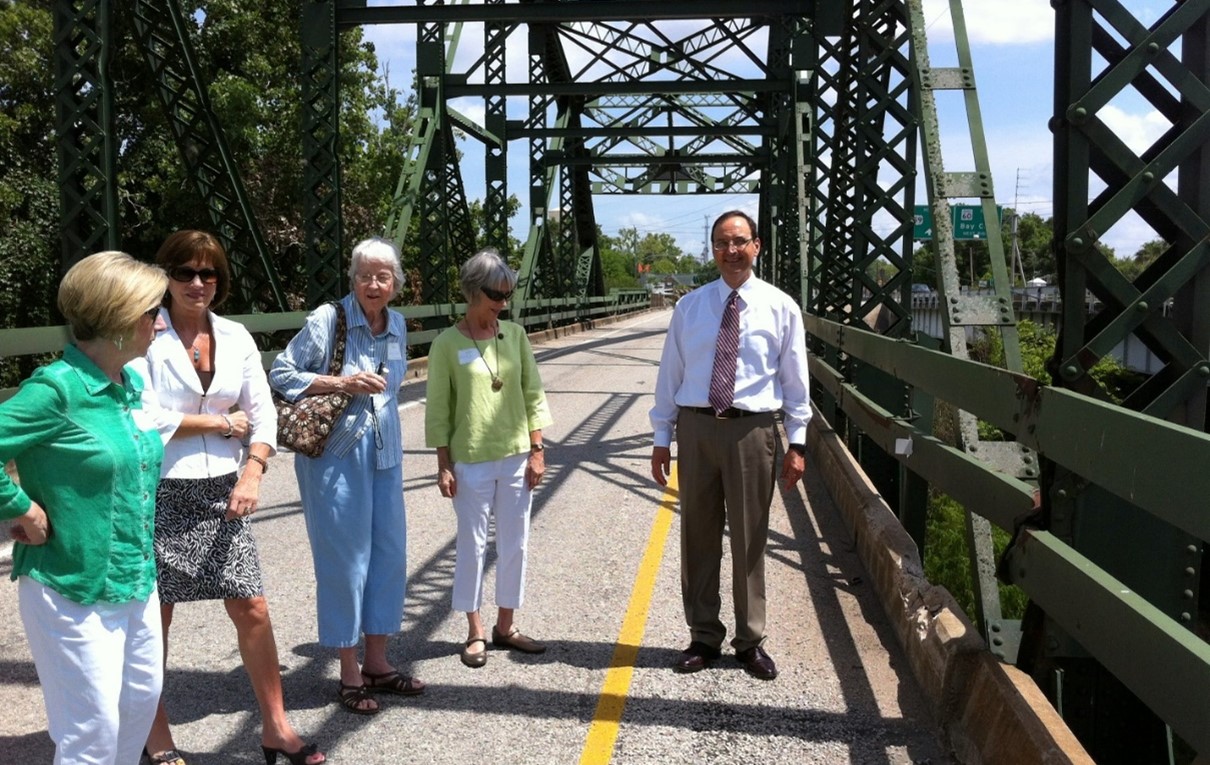Welcome to FHWA’s Section 106 Tutorial. This tutorial is designed to help transportation professionals and other interested individuals understand the fundamental requirements of Section 106 of the National Historic Preservation Act of 1966 (NHPA) and its implementing regulations. The process laid out by Section 106 and its implementing regulations (36 Code of Federal Regulations [CFR] Part 800) seeks to accommodate historic preservation with the needs of Federal undertakings.
Since the mid-1960s, Federal transportation policy has reflected an effort to preserve historic properties that have national, state, or local significance. The NHPA, signed into law the same day as the Department of Transportation Act of 1966, establishes our nation’s policy on historic preservation. Section 106 of the NHPA charges all Federal agencies with taking into account the effects of their actions on historic properties.

Members of the Wharton County Historical Commission visited a historic truss bridge after a Texas Department of Transportation rehabilitation project that turned the bridge into a one-way pair. Photograph courtesy of the Texas Department of Transportation.
The content of the tutorial has been divided into seven topic areas:
- Section 106 Overview – summarizes Section 106’s origin, regulations, and review process.
- Section 106 Participants: Roles and Responsibilities identifies the participants in the Section 106 process and defines their respective roles and responsibilities in the review process.
- What is a Historic Property discusses how the term “historic property” is defined according to the National Register of Historic Places.
- Steps in the Section 106 Process describes the four key steps in the Section 106 process and FHWA’s role in each.
- Related Statutes: The National Environmental Policy Act and Section 4(f) of the Department of Transportation Act discusses ways of effectively coordinating Section 106 with the National Environmental Policy Act (NEPA) and Section 4(f) of the Department of Transportation Act.
- Project Examples provides a collection of project descriptions involving different Section 106 scenarios.
- Key Terms provides a list of Section 106 key terms and acronyms that are used throughout the tutorial and are common to the field of historic preservation. A link to the glossary is provided whenever a key term or acronym first appears
For questions or feedback on this subject matter content, please contact David Clarke.

